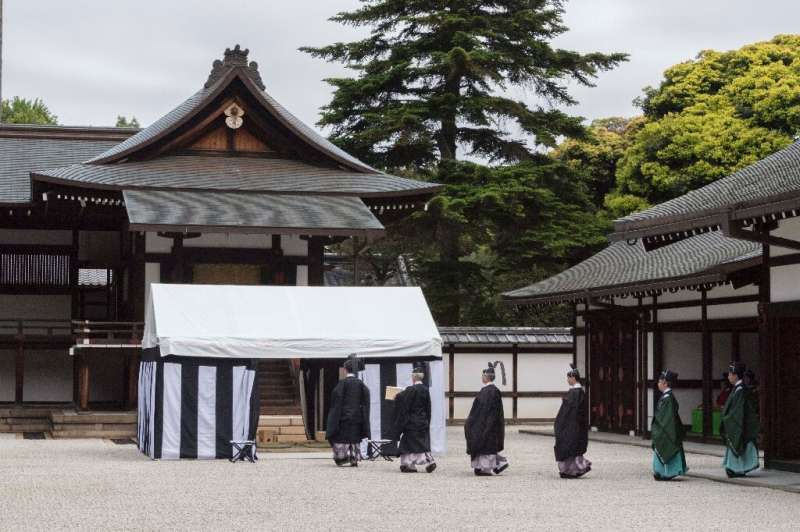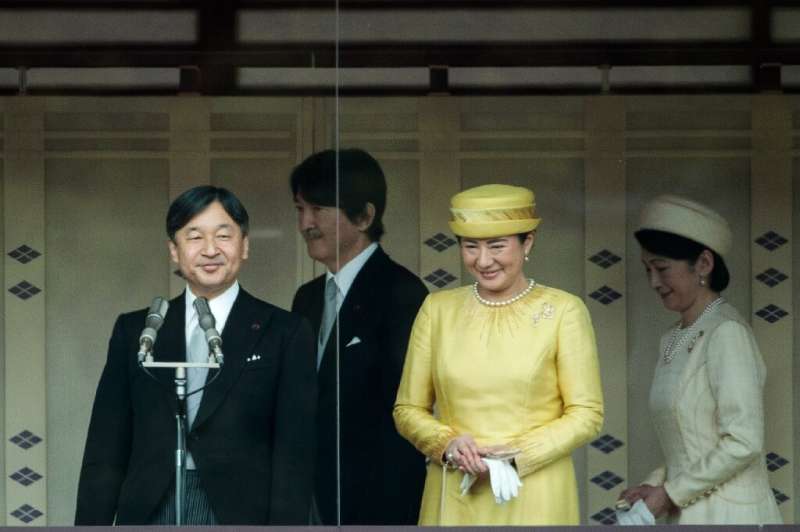Give 'em shell: turtles stick neck out for Japan rice forecast

In an ancient ceremony that occurs only once every imperial era, Japanese palace courtiers in traditional robes and hats decided on Monday where best to grow royal rice—using shells from endangered turtles.
Two thin plates made from turtle shells were heated over a flame to produce cracks then used to determine where rice should be grown for a key autumn ceremony presided over by new emperor Naruhito.
The cracks "told" officials to grow the rice in the ancient capital of Kyoto and north of Tokyo in Tochigi prefecture.
For the ceremony—which Naruhito did not attend—officials clad in long black robes and ornate black hats were seen walking slowly into a striped tent.
The rare ritual is conducted only after a new emperor takes the throne. It was last seen in 1990 about a year after Naruhito's father, Akihito, ascended the Chrysanthemum Throne.
While the shells are harvested from rare green sea turtles, they are procured as part of a conservation scheme, officials said.
The turtles come from the Ogasawara, a Pacific island chain that lies 1,000 kilometres (600 miles) south of central Tokyo but is administratively part of the capital.
People in the region have been eating sea turtles since the mid-19th century and are allowed to catch up to 135 of them annually.
Around 100 turtles are used for meat—often consumed raw—while the shells are used for craft objects.

Eggs are harvested from the others to keep the population stable and managed. These turtles are then released back into the sea.
Shells from eight turtles are provided to the palace but they are not killed specifically for the ritual.
Ogasawara town official Takeshi Ando told AFP that "earnest conservation efforts" were being made, noting that the number of eggs hatched there was increasing.
The village only catches big turtles with shells bigger than 75 centimetres (30 inches) as mandated by the Tokyo metropolitan government, he added.
A palace spokesman said the tradition had been in place "since ancient times".
The palace "must pass this on (to the future)" although it is aware that some believe it should not use the endangered animal, he told AFP.
Many on Japanese social media voiced surprise over the ancient rite.
"Too rare and too much fun to make a decision by fortune-telling with turtle shells in modern-day Japan," said one tweet.
Another Twitter user wrote: "I feel sorry for green sea turtles even though they were not killed only for their shells. We should carry on this tradition with something else."
The rice grown in the selected provinces will be used in a ceremony in mid-November, where the emperor will give thanks and pray for rich harvests, as well as peace for the country and people.
© 2019 AFP


















